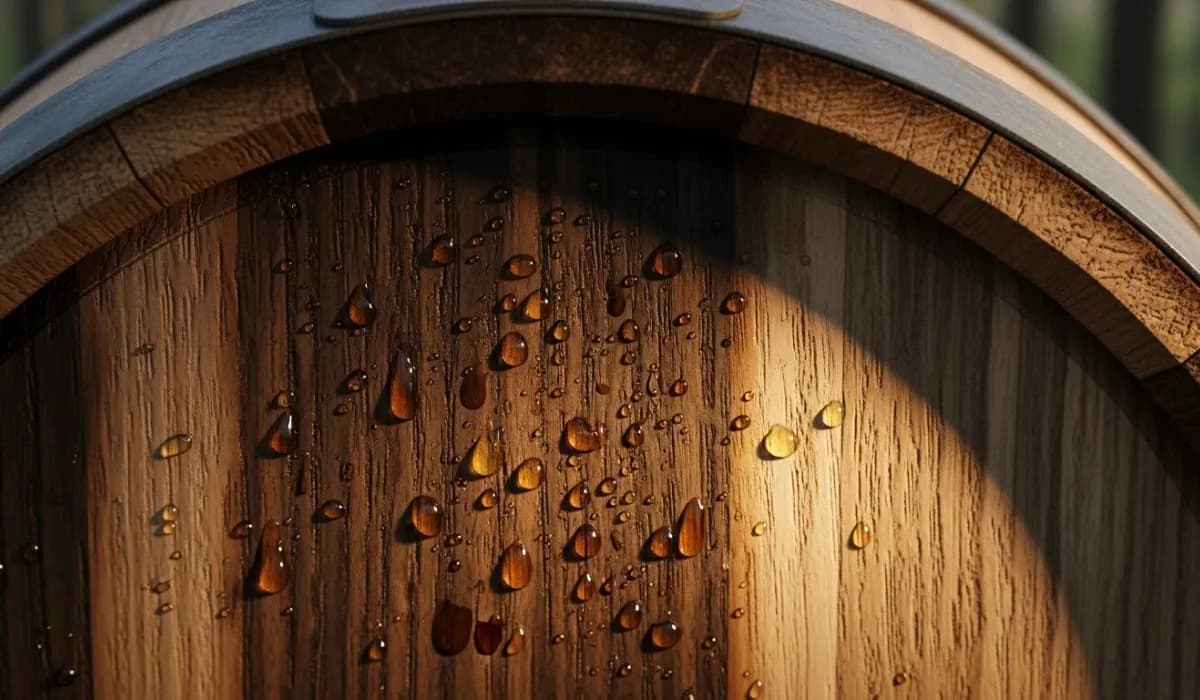
When whiskey leaves the still, it’s a clear, fiery liquid – raw, sharp, and full of potential. Years later, that same spirit emerges from its oak home transformed: amber in color, rich with aromas of vanilla, caramel, coconut, spice, and smoke. The alchemy behind this transformation isn’t magic but chemistry – the chemistry of wood, heat, and time.
This is the story of how a simple oak barrel turns clear alcohol into golden whiskey.
Not all wood is fit for whiskey. Distillers overwhelmingly choose oak, primarily American white oak (Quercus alba) and European oaks (Q. robur, Q. petraea), because of their unique structural and chemical composition.
Oak wood consists mainly of:
Unlike other woods, oak’s tight grain limits leakage yet allows slow oxygen exchange crucial for controlled aging.
Before a barrel meets spirit, it meets fire. Coopers toast and/or char the interior of oak staves to unlock flavor precursors and create a reactive surface.
Each distillery specifies its char level (from #1 light to #4 heavy “alligator char”), influencing both flavor and color intensity.
As whiskey seeps into the toasted oak, dozens of chemical transformations begin. Key extractives include:
Compound | Origin | Flavor Contribution |
Vanillin | Lignin breakdown | Vanilla sweetness |
Oak lactones (cis & trans) | Oak lipids | Coconut, woody notes |
Furfural / 5-methylfurfural | Caramelized hemicellulose | Toasted almond, caramel |
Eugenol, Guaiacol, Syringol | Lignin pyrolysis | Spice, smoke, clove |
Ellagitannins | Oak heartwood | Structure, astringency, antioxidant effect |
Color develops from extractable phenolics and caramelized sugars. These reactions also form melanoidins, the same brown pigments responsible for the deep hue of aged whiskey.
.webp&w=1920&q=75)
A new-make spirit is typically around 60–70% alcohol by volume. This mixture of ethanol and water is an extraordinarily versatile solvent:
Temperature and alcohol concentration control the pace of extraction. In warmer climates (like Kentucky or India), aging proceeds faster; in cooler regions (like Scotland), it’s slower and more delicate.
Oak barrels “breathe.” Minute quantities of oxygen pass through the wood and interact with the spirit, sparking oxidation and esterification reactions that create depth and softness.
This gradual process, called maturation, smooths the raw edges of new spirit and builds the round, complex flavor we associate with fine whiskey.
The inner layer of charred oak serves several critical roles:
The char level directly influences how much smoky, spicy, or sweet character the spirit will absorb.
Where the whiskey rests matters almost as much as the barrel itself.
Hence, barrels aging on a warm upper rack can taste dramatically different from those resting on a cool, damp floor.
.webp&w=1920&q=75)
Many whiskeys mature first in new oak (bourbon) or used casks (Scotch). Some are then transferred to sherry, port, or rum barrels for finishing. Each previous occupant leaves behind residual compounds – sugars, acids, and esters – that interact with the whiskey to create distinctive notes of dried fruit, nuts, or honeyed sweetness. This finishing step doesn’t override the base whiskey’s character but adds a final aromatic layer shaped by chemistry and time.
The final whiskey’s aroma is a chemical fingerprint of its journey through wood and time:
Each sip is the product of thousands of small reactions happening quietly in the dark.
Every oak cask is a living laboratory. Inside it, heat creates potential, ethanol unlocks flavor, and time orchestrates transformation. Over the years, wood and spirit exchange molecules until a delicate equilibrium is reached, one that defines whiskey’s golden color, velvet texture, and layered aroma.
In the end, the barrel isn’t just a container. It’s the true craftsman behind whiskey’s magic, turning clear spirit into liquid gold through nothing more than wood, fire, air, and patience.